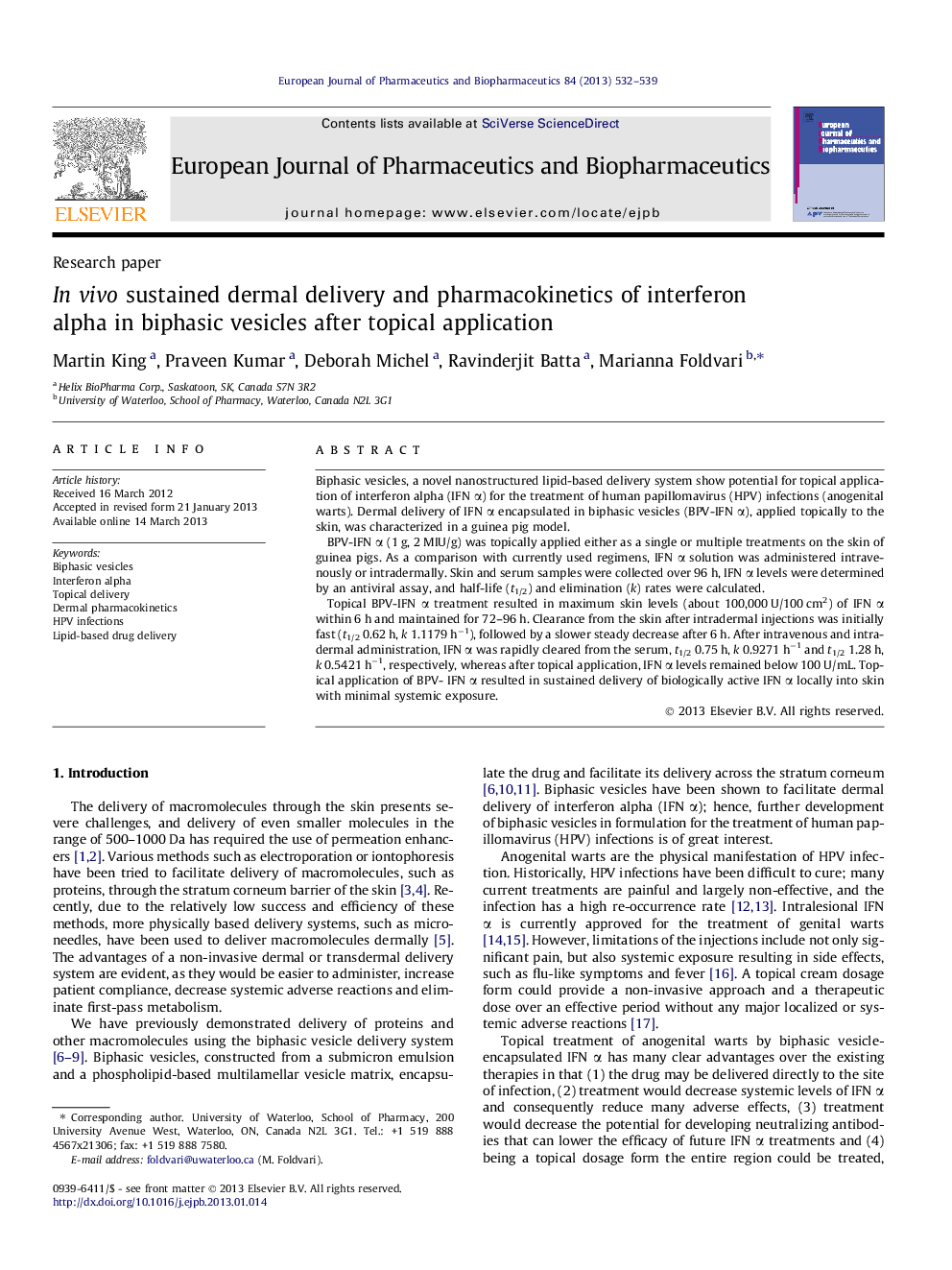| کد مقاله | کد نشریه | سال انتشار | مقاله انگلیسی | نسخه تمام متن |
|---|---|---|---|---|
| 2083474 | 1545350 | 2013 | 8 صفحه PDF | دانلود رایگان |

Biphasic vesicles, a novel nanostructured lipid-based delivery system show potential for topical application of interferon alpha (IFN α) for the treatment of human papillomavirus (HPV) infections (anogenital warts). Dermal delivery of IFN α encapsulated in biphasic vesicles (BPV-IFN α), applied topically to the skin, was characterized in a guinea pig model.BPV-IFN α (1 g, 2 MIU/g) was topically applied either as a single or multiple treatments on the skin of guinea pigs. As a comparison with currently used regimens, IFN α solution was administered intravenously or intradermally. Skin and serum samples were collected over 96 h, IFN α levels were determined by an antiviral assay, and half-life (t1/2) and elimination (k) rates were calculated.Topical BPV-IFN α treatment resulted in maximum skin levels (about 100,000 U/100 cm2) of IFN α within 6 h and maintained for 72–96 h. Clearance from the skin after intradermal injections was initially fast (t1/2 0.62 h, k 1.1179 h−1), followed by a slower steady decrease after 6 h. After intravenous and intradermal administration, IFN α was rapidly cleared from the serum, t1/2 0.75 h, k 0.9271 h−1 and t1/2 1.28 h, k 0.5421 h−1, respectively, whereas after topical application, IFN α levels remained below 100 U/mL. Topical application of BPV- IFN α resulted in sustained delivery of biologically active IFN α locally into skin with minimal systemic exposure.
Figure optionsDownload high-quality image (77 K)Download as PowerPoint slide
Journal: European Journal of Pharmaceutics and Biopharmaceutics - Volume 84, Issue 3, August 2013, Pages 532–539